Advertisements
- Home
- Community in the Columns
- Special Exhibitions
- Advertisements
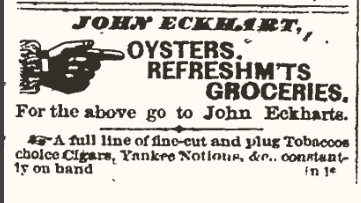
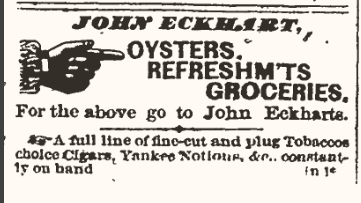
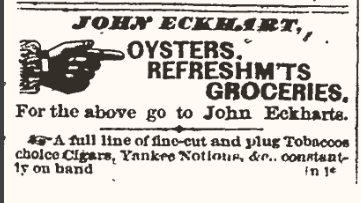
“OYSTERS, REFRESHMENTS, AND GROCERIES” John Eckhart’s advertisement in the Dalton Gazette proudly proclaims in an October 1875 issue.1 This small advertisement calls unusual attention to the presence of oysters. These curious crustaceans make appearances in the ad sections across the Dalton Gazette, the Wooster Republican, and the Wayne County Democrat. All of the papers mentioned oysters—from being prominently displayed in flashy advertisements, to being hidden in recipes instructing housewives how to cook a proper oyster stew.
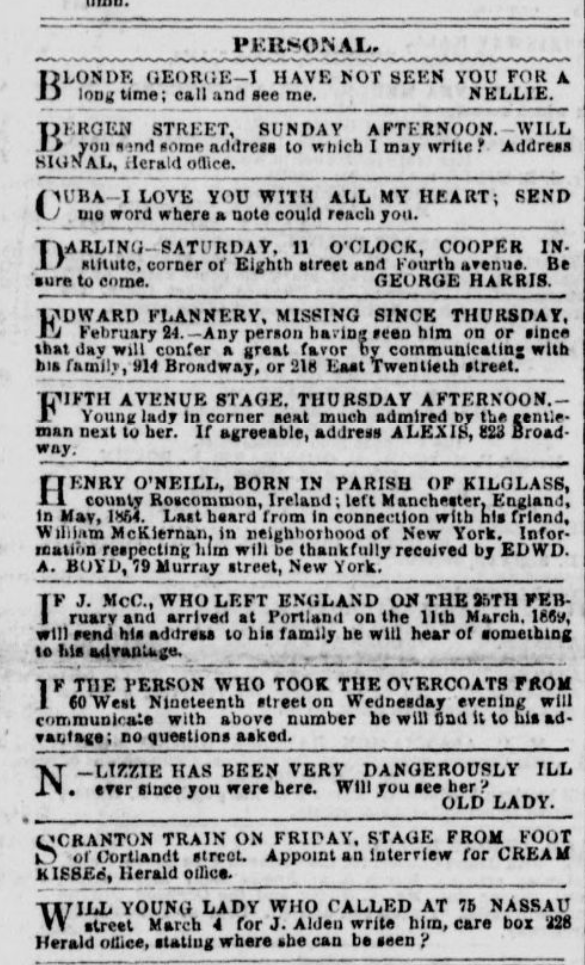
The last pages of these nineteenth century newspapers were full of the strange fonts and bold white spaces that made the advertisements section eye-catching. Illustrations were not common until the 1870s and 1880s, making the clever use of fonts crucial in early editions.2 This section, one whose modern equivalent we may be quick to scan past, offers valuable insight into the commerce, culture, and audience of the newspapers.
Many of the papers had a separate section of the paper devoted to the local business directory. A list of attorneys, physicians, and other professionals provided the contact information for patrons in a pinch. This section, along with the “personals” column, often received special attention depending on the newspaper. In the Wayne County papers, the business directory and personal ads were located on the first and second page. In larger papers, such as the New York Herald, the personal ads that ranged from first date requests to missing persons reports, spanned the first three full pages.
The newspaper ads were dominated by male merchants and aimed their goods at landowners and families. More so than anywhere else in the paper, however, the evidence of women as the intended audience is apparent. Women’s clothing, dresses and shoes as well as home décor and appliances–curtains, sewing machines, and stoves–sought to catch the eye of potential customers.
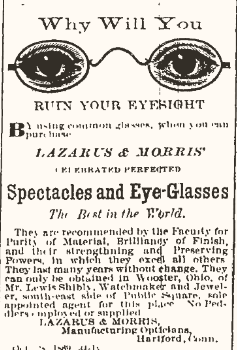

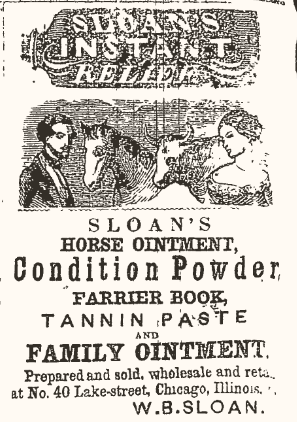
The advertisements section is also a brilliant example of how railroads influenced the goods available to a community like Wooster. In 1853, the last page of the Wooster Republican contains advertisements for Sloan’s Family (and horse) Ointment, a carriage repair station, and the opening of a new confectionary hoping to lure patrons with sweet candies and ice cream.3 Even with a variety of goods, the spread was mostly local. The items that originated elsewhere were textiles and materials that did not exist under the pressure of freshness or expiration.
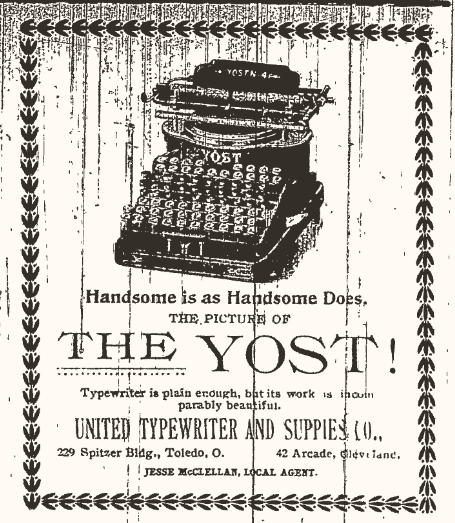
The same paper, in January of 1899, has advertisements in stark contrast to the ones printed almost 50 years prior. The ads, fewer but much larger, take up half pages with neat font and accompanying pictures. “Sales!” they announce, “Going out of Business!” They sell Singer sewing machines, spectacles, typewriters, Bissel sweepers, and fresh fruits imported from the south.4 The railroad timetables that also appeared in the papers explain how the goods were being transported with such efficiency.5
The oysters, as it turns out, arrived fresh from Baltimore, one advertisement in the Wayne County Democrat reveals.6 An exotic delicacy, the oysters served as a symbol of the changing culture present in Wooster. The shift from local to national goods demonstrates a Wooster solidly anchored within a nation. All the new products indicate the growth of a community—once restricted to the immediate area, now expanded to include states and regions miles and miles away.
Footnotes:
1: Dalton Gazette, October 5, 1875, 3.
2: Deb Kitko (Genealogy Librarian from the Wayne County Public Library), interview by Georgina Tierney, Owen Arace, and Laura Jentes, June 2, 2020.
3: For examples, see:
Ottawa Free Trader, April 14, 1860, 1.
New York Herald, March 2, 1870, 1-3.
Wayne County Democrat, July 23, 1890, 1.
Wooster Republican, January 5, 1854, 1.
4: Wooster Republican, January 4, 1899, 3-4.
5: For examples of printed Railroad Timetables, see:
Wayne County Democrat, March 2, 1870, 1.
Stark County Democrat, June 17, 1868, 3.
Wooster Republican, August 6, 1868, 1.
6: Wayne County Democrat, February 16, 1860, 3.

